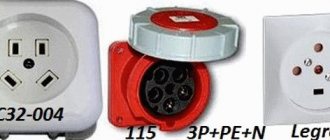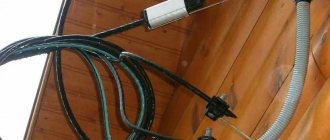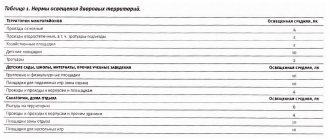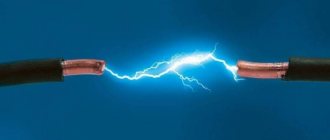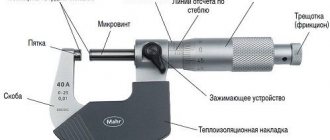How to find out how much electrical power is allocated to a house?
To find out the allocated power for a private house or apartment, you need to contact the operating organization (in Moscow and the region - this is Mosenergosbyt OJSC). The help contains information about the allocated and average power consumption.
Interesting materials:
Where do special operations give the most experience in Warface? Where are the most mountains in Kazakhstan? Where is the most cotton? Where are the most jellyfish in Crimea? Where is the largest youth population? Where do whales live most? Where are the most healthy fats? Where is Buddhism most widespread? Where are the most tannins found? Where are the most pine trees in Turkey?
What is a three-phase network?
Before putting into operation, any house or apartment is connected to the local power grid. Such a network can be single-phase or three-phase. With a single-phase connection, two wires are supplied to the house, a phase and a zero, between which the voltage is 220 V. A three-phase network is characterized by the presence of four wires: three phases and a zero. Between each phase and zero the voltage is 220 V, and between the phases themselves 380 V (as shown in the image).
To account for electricity in such a network, a three-phase meter is required, which is installed by the local distribution zone. A typical example of such a meter is INCOTEX Mercury 231 AM-01, designed for metering active electricity.
Electrician's recommendations
You should adhere to the basic rules when working:
- horizontal transitions from the junction box to the sockets or switch are laid at a height of 2.5 m;
- the insertion of veins is carried out only vertically or horizontally;
- connection points should only be located in mounting boxes;
- for underground cable laying, you need to use only a single piece with a strong armor tape;
- The biggest mistake is installing the switch in the zero gap;
- It is forbidden to install electrical wires near a wooden surface, but if this is unavoidable, then an insulating hose or gasket made of asbestos and steel with a thickness of 0.2 - 0.5 mm is used.
Is it necessary to use a voltage stabilizer?
First of all, it is needed by such complex and expensive equipment as computers and televisions, for which low voltage or voltage surges are especially critical. If a stabilizer is not installed at the entrance to the house after the meter, this can lead not only to problems with lighting (the light will periodically dim and flicker), but also to breakdown of electrical equipment and even a fire. The device must have sufficient limiting power so that it does not de-energize the network during peak load periods.
10
Three-phase power: advantages
The presence of three phases brings a lot of advantages to the owner of a private house or cottage. Here are some of them:
- Increased capacity
Every year the number of household electrical appliances in each home increases, which means their total power and the load they transfer to the electrical grid increase. Today in Russia, local Oblenergos offer the opportunity to draw up a contract for the consumption of 5 kW for single-phase networks and 15 kW for three-phase networks.
Let's assume you have one phase and the total power of all electrical appliances in your house is 4 kW. But time passed, and you decided to buy yourself a 3 kW welding machine. By the way, you can read about which welding machine to buy here. In this case, the total power will be 7 kW, and you will not be able to use all devices at the same time. And if in the future you plan to install pumping equipment or an electric heating system, then you should think about connecting a three-phase network.
- Even load distribution
Thanks to the operation of three phases simultaneously, it is possible to evenly distribute the load between them to avoid distortion. For example, if you regularly weld in the garage, it is best to do it on a different phase to which the TV, computer equipment or light bulbs in the house are connected. You can calculate the load for each household appliance and distribute them proportionally across phases.
There are also cases when, due to increased load (not through your fault), the voltage drops to 170 V or even lower on certain phases. This often happens if the house is located at a great distance from the transformer substation, and there are dozens of other consumers in front of it. In this case, the equipment can be temporarily switched to a less loaded phase, and when the imbalance “goes away”, everything can be returned to its place.
- Operation of three-phase equipment
Although most household appliances operate on 220 V, there is still equipment for three-phase networks of 380 V. The following types of such equipment can be distinguished:
- Pumping stations. Some deep and surface pumping stations require 380 V.
- Transformer welding machines.
- Heating boilers. Most electric heating boilers have a rated power of 7 - 9 kW - a single-phase network simply would not cope with it. For example, for a single-circuit boiler EVAN Warmos-IV-9.45 with a power of 9.45 kW, three phases are required.
- Possibility of installing automatic circuit breakers and RCDs with lower nominal values
Due to the fact that each phase wire in a three-phase network will have a lower load than on one phase in the case of a single-phase input, it is possible to install circuit breakers and RCDs with lower current loads. For example, if devices with a total power of 3 kW are placed on each phase, then each phase will require an automatic machine capable of withstanding such a load:
3000/220 = 13.6 A (phase load)
The closest machine is rated at 16 A. For single-phase power supply with a maximum possible power of 5 kW, you will need a more powerful machine. The same rule applies to residual current devices. We have already written about how to choose an RCD based on power, so we will not dwell on this.
Disadvantages of three-phase power
Three-phase power also has several unpleasant aspects that should be considered before connecting:
- Connection and equipment costs
If you already have a single-phase input into your house, then reconnecting to a three-phase one will require additional expenses. Such expenses include:
- Drawing up a contract . According to current legislation, drawing up an agreement for the installation of a three-phase input and a meter costs 550 rubles.
- Buying a meter and wires . The average cost of a three-phase meter included in the state register is 1,500 rubles. Also, for input you will need approximately 20 m of insulated SIP cable with a cross-section of 16 mm2, costing 1,200 rubles. It is also worth considering the need to organize wiring inside the house for a three-phase house. This indicator is difficult to calculate, since all houses are different in size.
- Additional machines . Each phase will require its own machine. You will also need to install a voltage monitoring relay so that you can always “monitor” the voltage in each phase and, in case of distortions, switch between phases.
In order for electricians to connect you to a three-phase network, you will have to stand in line and wait a couple of weeks. If you don’t want to wait, you will have to pay separately for urgency. As a result, connecting three-phase power will cost its owner a tidy sum.
- Increased dimensions of the panel room
To connect three-phase power it is necessary to install a large switchboard. This is due to the presence of additional protective and distribution equipment. Typically, such a power cabinet or switchboard is installed outdoors so that it does not take up much space in the house.
It is worth noting that energy sales have certain requirements for distribution boards. For example, protection of the switchboard from dust and dirt should be at least IP31, and in wet rooms IP54. For some owners of summer cottages or private houses, finding a suitable place for a cabinet or installing such a structure can be a real challenge.
- Re-wiring in the house
If initially the house had one phase, then connecting two more will require the owner to completely redesign the wiring. So initially all sockets and light bulbs were “planted” on one phase. With a three-phase connection, these sockets will need to be moved, and this means considerable repairs in the house, since you will have to trench the walls for the wiring. Naturally, this work requires additional time and money.
Universal solution
The world's leading generator manufacturers have managed to eliminate the above problems by creating a 220/380V combined generator. The principle of its operation is to install a special switch (Voltage Transfer Switch). It switches the voltage in the alternator and produces the output you need. The advantage is that you receive nutrition:
- No loss of power;
- Without problematic phase imbalance.
The inventor of the switch is the German company Konner&Sohnen. However, there are analogues among generators from Hyundai, Vitals, Iron Angel, Matari, Vulcan.
A universal device, although more expensive, is very beneficial for a home where there are both single-phase and three-phase appliances.
Electrical input 380 volts 15 kW
One of the points of the technical conditions that the applicant must fulfill when connecting his future home to 380 volts 15 kW is:
Install a 25 ampere circuit breaker at the input, with the possibility of sealing it.
On the one hand, this requirement does not present any difficulty. But there are some pitfalls
, which we will look at a little later.
What kind of cable is used for wiring in the house?
For internal wiring, you should use a hard stranded cable of the VVGng and NYM brands or a soft stranded cable PVS. As you know, problems with wiring are the most common cause of fires in the residential sector, so you cannot skimp on cables under any circumstances. You should only buy products with a cross-sectional area of copper conductors no less than that regulated by the PEU, and certainly manufactured in accordance with GOST requirements.
As a rule, wires with a copper conductor cross-section of at least 0.75 mm² are laid to light switches, and 1.5 mm² to sockets, and circuit breakers designed for a current of 10 and 16 A are installed, respectively. In both cases, this is enough to ensure that the cables do not overheat, and in the event of a short circuit, a person’s safety is guaranteed.
To organize street lighting, both for overhead and underground laying of wires, it is recommended to use multi-wire armored cable brand VBBShV
14
Electrical input device 380 volt 15kW
Let's look at a photograph of one of these shields in one of the office premises.
Three phases are connected to the input circuit breaker, zero is connected to the electrical energy meter. Grounding system - TT (not according to PUE). The meter and automatic machine are sealed. On the right side of the shield there are three groups of circuit breakers, each group for its own phase.
Now we can talk about the pitfalls.
An example of an electrical network configuration for a two-story house
- Input machine
- Counter
- Input (fire) RCD
- Circuit breaker 2nd floor
- RCD of sockets on the 2nd floor
- 1st floor circuit breaker
- RCD of 1st floor sockets
- Automatic sockets on the 1st floor
- Automatic well pump, utility unit, gazebo, outdoor lighting
- RCD of external lighting
- Sockets (double or triple): 18 pcs. (11 pieces on the 1st floor, 7 pieces on the 2nd floor)
- Switches: single-key – 11 pcs. (6 pcs. on the 1st floor, 5 pcs. on the 2nd floor), two-key – 2 pcs. (on the 1st floor)
- Switch-socket: 1 pc. (on the 1st floor)
- Ammo: 10 pcs. (6 pieces on the 1st floor, 4 pieces on the 2nd floor)
An example of filling out a distribution panel for a cottage (diagram TN-CS)
13
